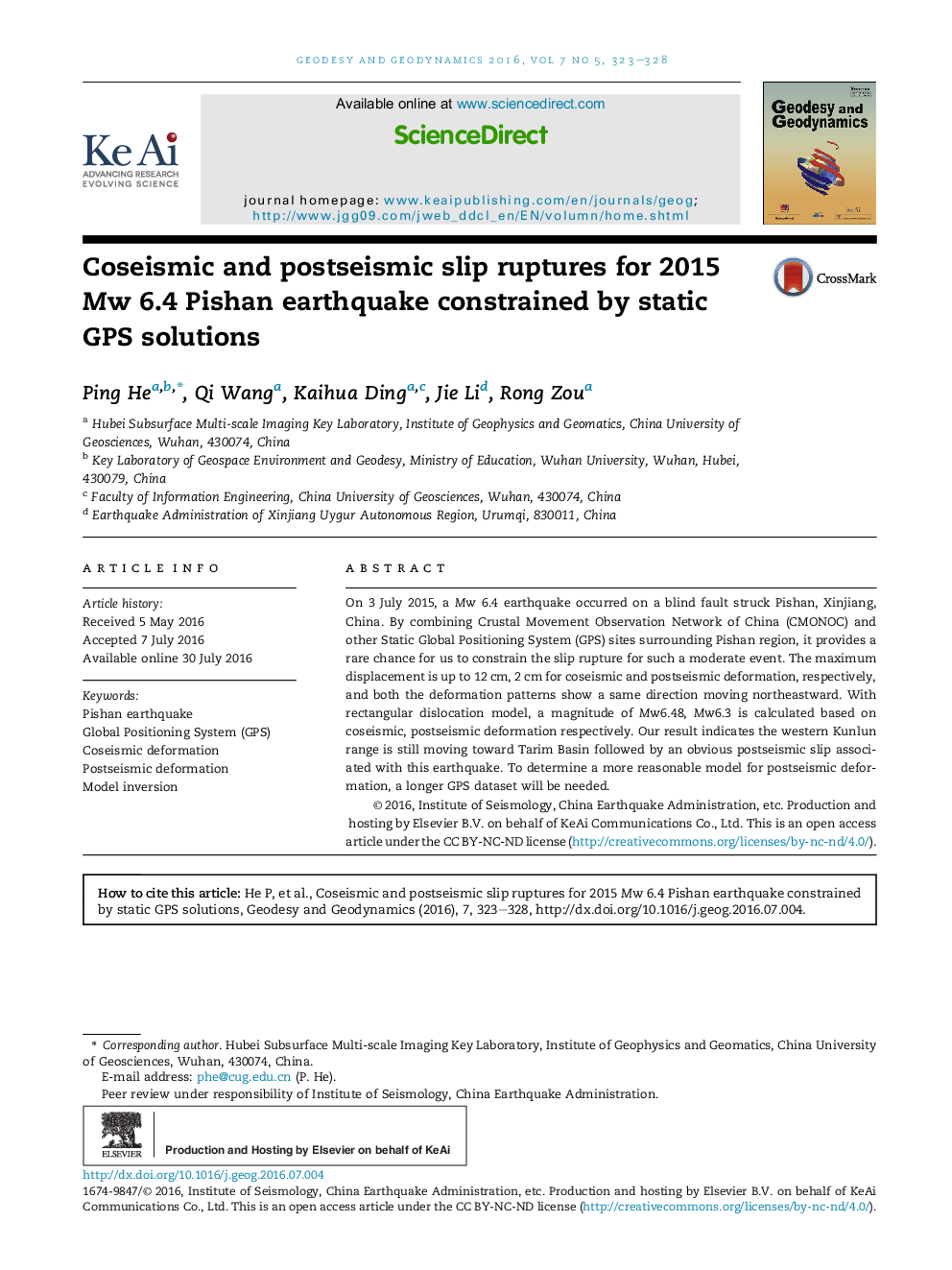| Article ID | Journal | Published Year | Pages | File Type |
|---|---|---|---|---|
| 4683477 | Geodesy and Geodynamics | 2016 | 6 Pages |
On 3 July 2015, a Mw 6.4 earthquake occurred on a blind fault struck Pishan, Xinjiang, China. By combining Crustal Movement Observation Network of China (CMONOC) and other Static Global Positioning System (GPS) sites surrounding Pishan region, it provides a rare chance for us to constrain the slip rupture for such a moderate event. The maximum displacement is up to 12 cm, 2 cm for coseismic and postseismic deformation, respectively, and both the deformation patterns show a same direction moving northeastward. With rectangular dislocation model, a magnitude of Mw6.48, Mw6.3 is calculated based on coseismic, postseismic deformation respectively. Our result indicates the western Kunlun range is still moving toward Tarim Basin followed by an obvious postseismic slip associated with this earthquake. To determine a more reasonable model for postseismic deformation, a longer GPS dataset will be needed.
